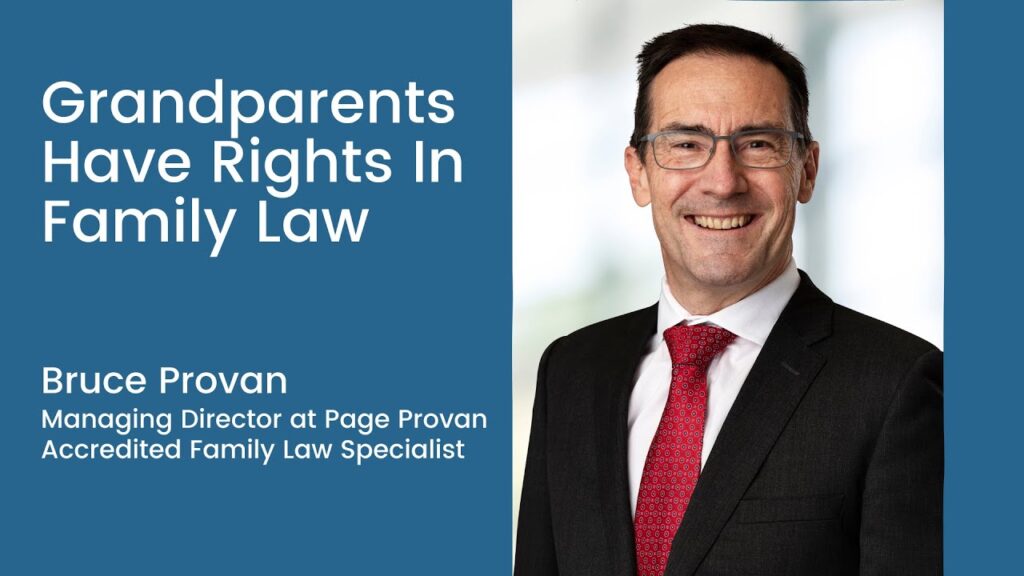Assault- stats from the States
It’s a sad fact that domestic violence occurs all too frequently, and that a feature of domestic violence can be sexual assault. Rape in a marriage (or of a de facto partner) is an offence in Australia.
I have recently been reading the California Coalition Against Sexual Assault (Calcasa) 2008 trends report. It’s got American stats, but is chock full of interesting bits. Here’s a sample:
The closer the relationship between the female victim and
the offender, the greater the likelihood that the police
would not be told about the assault. When the offender
was a current or former husband, 75% of all victimizations
were not reported
Most often cited reasons for not reporting their victimization
to law enforcement were:
• Completed rape (forced sexual intercourse): personal
matter – 23%, fear of reprisal – 16%, belief that police
are biased – 6%
• Attempted rape: personal matter – 17%, fear of
reprisal 11%, protecting the offender – 10%
• Sexual Assault (unwanted sexual contact): personal
matter – 25%, reported to another official – 12%, fear
of reprisal – 11%
Only 16% of rapes are ever reported to the police. In a
survey of victims who did not report rape or attempted
rape to the police, the following was found as to why no
report was made: 43% thought nothing could be done,
27% felt it was a private matter, 12% were afraid of police
response, and 12% felt it was not important enough.
In 1999, rape or sexual assault was the violent crime least
often reported to law enforcement (28%).
<For
sexual assault, subjects were significantly more likely to
suggest calling the police when the perpetrator of the sexual
assault was a stranger than when he was her
boyfriend. Also, female subjects were less likely to advise
reporting when the victim had been drinking and was
assaulted by her boyfriend.>
Compared to violence without injury, a higher percentage
of violence against women involving injury was reported to
police. Victimizations that resulted in injury were equally
likely to be reported to police regardless of the relationship
between the victim and offender.
A study of 278 acquaintance rape survivors indicated that
97% informed at least one close confidant, 28% informed
the police.
Child sexual abuse is associated with revictimization;
55.4% of women who reported childhood sexual abuse
reported subsequent rape, whereas 20.2% of the women
who reported no childhood abuse reported rape. The odds
ratio indicated that women with a childhood history of
sexual abuse were 4.7 times more likely to have been subsequently
raped. Women reporting a combined childhood
history of physical and sexual abuse reported the highest
rape rates.
42% of the women who were victims of date or acquaintance
rape said they had sex again with the men who
assaulted them.
In a 1999 longitudinal study of 3,006 women, researchers
found that women who had been victimized before were 7
times more likely to be raped again.
A 1997 New Zealand study found that women who had
been sexually abused as children were between 2 and 11
times more likely to be raped or experience an attempted
rape. The differences depended on the extent of the child
sexual abuse the person had experienced, with completed
intercourse placing survivors at the highest risk. Victims of
sexual abuse that did not involve any physical contact with
the victim (indecent exposure, masturbation, etc.) were 2
times as likely to be assaulted again, victims of sexual
abuse that involved physical contact, but no intercourse
were 5 times as likely, and victims of sexual abuse that
consisted of intercourse resulted in the victim being 11
times more likely to be raped versus a person who had
never experienced any sexual abuse during their
childhood.
A longitudinal study to assess the prevalence and incidence
of rape and related physical and mental outcomes
estimated that the national rate of rape related pregnancy
is 5% among victims of childbearing age (12-45 years).
Among the cases of rape-related pregnancy in their sample, the majority had occurred among adolescents and
resulted from assaults by a known, often related, perpetrator.
Only 12% of the sexual assault victims in this study
received immediate medical attention, 47% received no
medical attention relating to the rape. 32% percent of the
victims did not discover they were pregnant until they had
already entered their 2nd trimester. 32% of the women
opted to keep the infant, 50% underwent an abortion, 6%
placed the infant up for adoption and 12% had a spontaneous
abortion.
Rape, childhood sexual abuse, and domestic violence are
among the most common causes of Post Traumatic Stress
Disorder (PTSD) in women. The chances that a woman will
develop PTSD after being raped are between 50% and
95%. Sexual assault is also closely associated with depression
and anxiety disorders.
More than half of spousal rapes, rapes by ex-spouses, and
stranger rapes resulted in victim injury, while about a
quarter of parent-child rapes resulted in major injury.
Injuries were most common among victims of age 30 or
older and victims of rapists armed with a knife. Nearly 6 in
10 rapes involving a knife resulted in victim injury.
About 7 out of 10 victims of rape/sexual assault reported
that they took some form of self-protective action during
the crime. Among victims who took a self-protective
approach, just over half felt that their actions helped the
situation. About 1 in 5 victims felt that their actions either
made the situation worse or simultaneously helped and
worsened the situation.
Stranger perpetrated assault victims were more likely
to believe that their self-protection actions actually
helped the situation compared to victims of intimate
assault (76% compared to 56%). Consistent with this,
those who were victims of intimate assaults were
more likely to believe that self-protective measures
employed made the situation worse.
Among female rape victims, 61% are under age 18.
Children who grow up in a family where there is domestic
violence are eight (8) times more likely to be sexually
molested within that family.
A recent study of women presenting to a hospital based
sexual assault care center in Canada after having been
sexually assaulted by a spouse (n=97), acquaintance
(n=194) or boyfriend (n=256) indicated that:
• Women who were assaulted by spouses presented for
treatment sooner than other groups and were more
likely to call the police.
• Women who reported being sexually assaulted by a
spouse were older than women sexually assaulted by
boyfriends or acquaintances.
• Women assaulted by a current/ex-boyfriend or spouse
were more likely to complete a physical exam and evidence
kit than those who were assaulted by an
acquaintance.
• Spousal coercion often took the form of: assaults against
a sleeping victim, verbal threats, physical restraints, use
of drugs or alcohol to incapacitate or lower resistance, or
physical violence. Boyfriends were more likely to have
used verbal or physical threats. Physical violence was
most likely to be used by spouses.
• Women who were assaulted by boyfriends and spouses
were significantly more likely to present with physical
injuries than women assaulted by acquaintances.
Nearly 25 million women and 7 million men are raped
and/or physically assaulted by an intimate partner in their
lifetime.
Sexual assault is reported by 33%-46% of women who are
being physically assaulted by their husbands.
The National Crime Victimization Survey of 1994 indicates
that of the 45,890 rapes/sexual assaults committed by
someone the victim knew, at least half were committed by
the victim’s spouse and greater than a quarter were committed
by an ex-spouse.
Men who admitted having forced their wives to have sex
were 2.6 times more likely than other men to have caused
an unplanned pregnancy.A study of a random sample of 930 women age 18 or older
indicated that nearly 14% of the women who had ever
been married were the victims of at least one completed or
attempted rape by their husbands or ex-husbands.
The National Violence Against Women Survey reported the
following statistics:
• 25% of surveyed women and 8% of surveyed men
said they were raped and/or physically assaulted by a
current or former spouse, cohabiting partner, or date in
their lifetime,
• 7.7% of women and .3% of men said that they had
been raped by an intimate partner in their lifetime.
22.1% of women and 7.4% of men said that they had
been physically assaulted by an intimate partner in
their lifetime,
• According to survey estimates, approximately 1.5 million
women and 834,000 men are raped and/or physically
assaulted by an intimate partner annually in the
United States, and
• Violence against women is primarily partner violence.
76% of the women who were raped and/or physically
assaulted since age 18 were assaulted by a current or
former husband, cohabiting partner, or date, compared
with 18% of the men. 17% of the women surveyed
were raped and/or physically assaulted by an
acquaintance, such as a friend, neighbor, or coworker;
14% were victimized by a stranger, and 9% were
victimized by a relative other than a husband. Total
percentages exceed 100 because some victims had
multiple perpetrators.
30% of the adult sexual assault cases (after 16 years of
age) reported in the Women’s Safety Project Survey were
perpetrated by men who were in intimate relationships
with the women they assaulted. These men were husbands,
common-law partners, or boyfriends. An additional
28% of the cases were perpetrated by men who were
dates and/or acquaintances of the women they sexually
assaulted. When other known assailants (co-workers,
authority figures) are included, a total of 83.3% of the
sexual assault cases were perpetrated by men known to
the women they assaulted.
Approximately 60% of female and male victims of some
form of intimate partner violence were injured but not
treated.
Studies have indicated a higher prevalence of
partner/spousal violence in young partners in the early
stages of marriage. Highest rates were with partners 30
years old and younger with the highest prevalence among
those in the 18-24 year old age group.
Women living with female intimate partners experience
less intimate partner violence (11%) than women living
with male intimate partners (30.4%).
A recent study found that the number of forced sexual
experiences a woman has correlates significantly with
depression. Women who experienced more sexual assaults
reported increased levels of depression, as well as presenting
with significantly more gynecological problems than
women who were not sexually abused.
Over half of the women in a recent survey on
separation/divorce sexual assault indicated that they had
been assaulted by their partners when they wanted to
leave, 32% indicated they had been assaulted during the
process of leaving and 37% had been assaulted by their
partner after they had left the relationship.
Physical Assault
A survey to examine the patterns of physical abuse before,
during and after pregnancy conducted with 2,648 women
participating in the North Carolina Pregnancy Risk
Assessment Monitoring System found that:
• 6.9% of the women reported being abused during their
pregnancy and 3.2% were abused post-partum.
• 77% of those abused post-delivery were injured in
some way. Although 75% of the women had multiple
types of injuries, only 23% received medical care.
• Virtually all of the women abused took advantage of
the well-baby program, and the presence of maternal
physical abuse did not negatively impact the abused
mother’s participation in the program, a factor that
researchers noted would make these visits a prime
place for screening for physical violence.
Analyzing previous survey data for trends, researchers note
that:
• Younger victims of intimate partner violence were less
likely to report the violence to the police.
• Women separated from their husbands were victimized
at a higher rate than married, divorced, widowed or
never-married women.
In an analysis of data from Supplementary Homicide
Reports collected by the Federal Bureau of Investigations
(FBI) over an 18 year period, there were 13,670 cases in
which a woman was killed by her spouse. Women between
the ages of 20-24 years old were 1.5 times as likely to be
murdered by their spouse than any other age group.480
Physical violence in intimate relationships almost always is
accompanied by psychological abuse, and in one-third to
over half of cases, by sexual abuse.481
The National Violence Against Women Survey found that
most physical assaults perpetrated against women by
intimate partners consist of pushing, grabbing, shoving,
slapping, and hitting.
Women are significantly more likely than men to report
being victims of intimate partner violence whether it is
rape, physical assault, or stalking and whether the timeframe
is the person’s lifetime or the previous 12 months.
Violence perpetrated against women by intimates is often
accompanied by emotionally abusive and controlling
behavior. The survey found that women whose partners
were jealous, controlling, or verbally abusive were significantly
more likely to report being raped, physically
assaulted, and/or stalked by their partners, even when
other sociodemographic and relationship characteristics
were controlled.
Of the estimated 4.8 million intimate partner rapes and
physical assaults perpetrated against women annually,
approximately 2 million will result in an injury to the
victim, and 552,192 will result in some type of medical
treatment to the victim.
Battered women seeking shelter were surveyed at intake
about their experiences with pet abuse and the roles of
pets in their abusive relationships. Of the women with
pets, 46.5% reported that their batterers had threatened to
harm or actually harmed their pets.
About 85% of victimizations by intimate partners in 1998
were against women. Women were victims of intimate
partner violence at a rate about 5 times that of males.487
Most victims injured by an intimate partner did not report
seeking professional medical treatment for their injuries.
About 6 in 10 female and male victims of intimate partner
violence were injured but not treated.
According to data about intimate partner violence between
1993-1998, the highest rates of victimization were among
women who were African American, young, divorced or
separated, earning lower incomes, living in rental housing,
and living in an urban area.
In a 1999 survey of 607 individuals, 47% of Cambodian
persons, 44% of South Asian persons, 39% of Vietnamese
persons, 32% of Korean persons, and 24% of Chinese
persons knew a woman who had been physically abused
or injured by her partner.
In 1998, there were 1,932 females murdered by males in
single victim/single offender incidents that were submitted
to the FBI for its Supplementary Homicide Report.
• More than 12 times as many females were murdered
by a male acquaintance than were killed by a male
stranger.
• 60% of female homicide victims were wives or intimate
acquaintances of their killers.
• More female homicides were committed with firearms
(54%) than with all other weapons combined. Of
the homicides committed with firearms, 77% were
committed with handguns.
A study of femicide cases in which the victim was killed by
an abusive partner indicated that the highest risk factors
for intimate partner lethal violence were associated with
the perpetrator’s access to firearms and being unemployed.
Risk was also higher when the abuser was highly controlling
and when the woman separated from an abusive
intimate partner or left the abuser for another partner.












